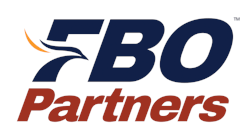“Simplest is always best.” That’s a quote from the movie John Adams, where Thomas Jefferson is describes the process he went through in the invention of the swivel chair. “I went through a number of variations; this one is by far the most successful.” The simplest turned out to be the best. Note that Jefferson even made his conclusion as simple as possible as well– only four words long.
Before we go any further, let’s briefly distinguish between the terms “simple” and “easy.” First, they’re not the same. Can something be simple and easy? Sure – take, for example, waving hello to a dear friend. Is that simple? Yes, it is. And, it’s also easy! But what about running a marathon? Is that simple? Of course – just put one foot in front of the other 46,000 times without stopping. Couldn’t be simpler. But is it easy? Assuredly, that answer is “no.”
Can Jefferson’s advice on simplicity still be relevant 243 years later, even when applied to Safety Management Systems? The simplest answer is of course, “Yes.” A few years ago, I was helping a commercial ground handling organization prepare for an industry SMS audit. When I read aloud from the audit manual, “Does the provider have a written procedure for the placement of chocks following an aircraft departure,” the ground handling manager’s eyes widened, and an expression approaching panic began to form on his face. “Umm, no we don’t. I guess we’ll need to go ahead and buy some bins for each gate, stencil ‘PLACE CHOCKS HERE’ on each of them, develop a new Chock Handling Procedure, create some training slides, and then make sure everyone is following the new procedure.” He thought I’d be pleased with the comprehensive nature of his new plan of action to comply with this audit requirement.
“Well, that’s one way to do it. But you’ve been in operation now for over ten years at this airport. What have your employees been doing with the chocks all this time?” He told me that after each flight, the ground handlers placed the chocks outside the aircraft envelope boundary line, in front of the nose wheel area. As I peered through his office window at nearby departure gates, sure enough, there were two neatly-stacked piles of chocks at the locations he described. I then typed one sentence in his draft safety manual: “After aircraft pushback, chocks shall be placed outside of the aircraft envelope boundary line in front of the nose wheel markings.” I looked up and told him he was now in compliance with the audit question, so we moved on to the next element. Clearly the organization already had a procedure; the remaining step was merely to memorialize it in a written procedure. Rather than adopt easy solutions, organizations tend towards procedural complexity where it is not needed. Simplest is always best.
On another occasion, an FBO was considering options on implementation of a safety reporting system. The terminology alone sounds complicated, right? The general manager was under the impression he’d need to buy an expensive software package subscription, create logins for all employees to access it, and then make sure all reports are properly risk assessed, analyzed, corrected and closed out. For an operator of an international airline or a large hub airport, that description is the appropriate scale needed for an effective safety management system, as the alternative would be to manage such data on a spreadsheet and thousands of emails which would introduce excessive complexity, inaccuracy and cost.
But in my case, this was a single FBO undertaking a safety reporting system. And it already had a safety suggestion box in the line office. I asked the GM, “What do you do when you come in to work each day?” As many general managers do, she would say hello to her team and customers in the lobby, get a cup of coffee, go to office to read her emails, and prepare the daily employee briefing.
I asked if she could also check the suggestion box each day on the way to her office, after getting her coffee. “Yes,” she said. I then asked if she could also review any safety reports she received with her staff at their weekly meeting. Another yes. I asked if she’d also have time to be able to brief employees on the outcome of any reports that she had received. With the final yes in hand, I congratulated her for the successful implementation of her very first employee safety reporting system. As documentation helps maintain a system, I recommended memorializing a description of this procedure in writing and posting it in the line room. Eventually, she could begin to assess the reports by risk to prioritize them, and importantly- recognize her employees for participation in safety reporting. And later, she could introduce the concept of “Just Culture” in her disciplinary policies for employees who report their own errors. As the saying goes, perfection is the enemy of good. This GM knew getting her employee safety reporting system in place was an important step in her FBO’s safety journey; and that a good start begins with simple. Improvements will come with time, experience, and engagement of her staff and employees.
Another SMS concept that becomes entangled in the over-complication trap is risk assessment. Does the term bring up visions of complex algorithms and risk matrices? And which severity-likelihood scoring matrix is best? How about the definitions of severity and likelihood? Should an organization introduce a third axis like avoidability? All good questions, but if one waits to answer all of these before using risk assessment as a general tool, one misses out on opportunities to improve right now. Let the purpose of the risk assessment exercise be more important than the function of scoring values and documentation design.
The proper implementation of an organizational safety system is enough of a challenge. Unnecessary complexity adds obstacles to efficacy, making the very process disincentivize employees from taking an active role in that nascent system. Keep it Simple – it’s always best!
Patrick Moylan is a Certified Safety Professional and Senior Associate at FBO Partners, LLC, an aviation consultancy providing business management advisory services to Fixed Base Operations (FBOs). Moylan may be reached at [email protected]





